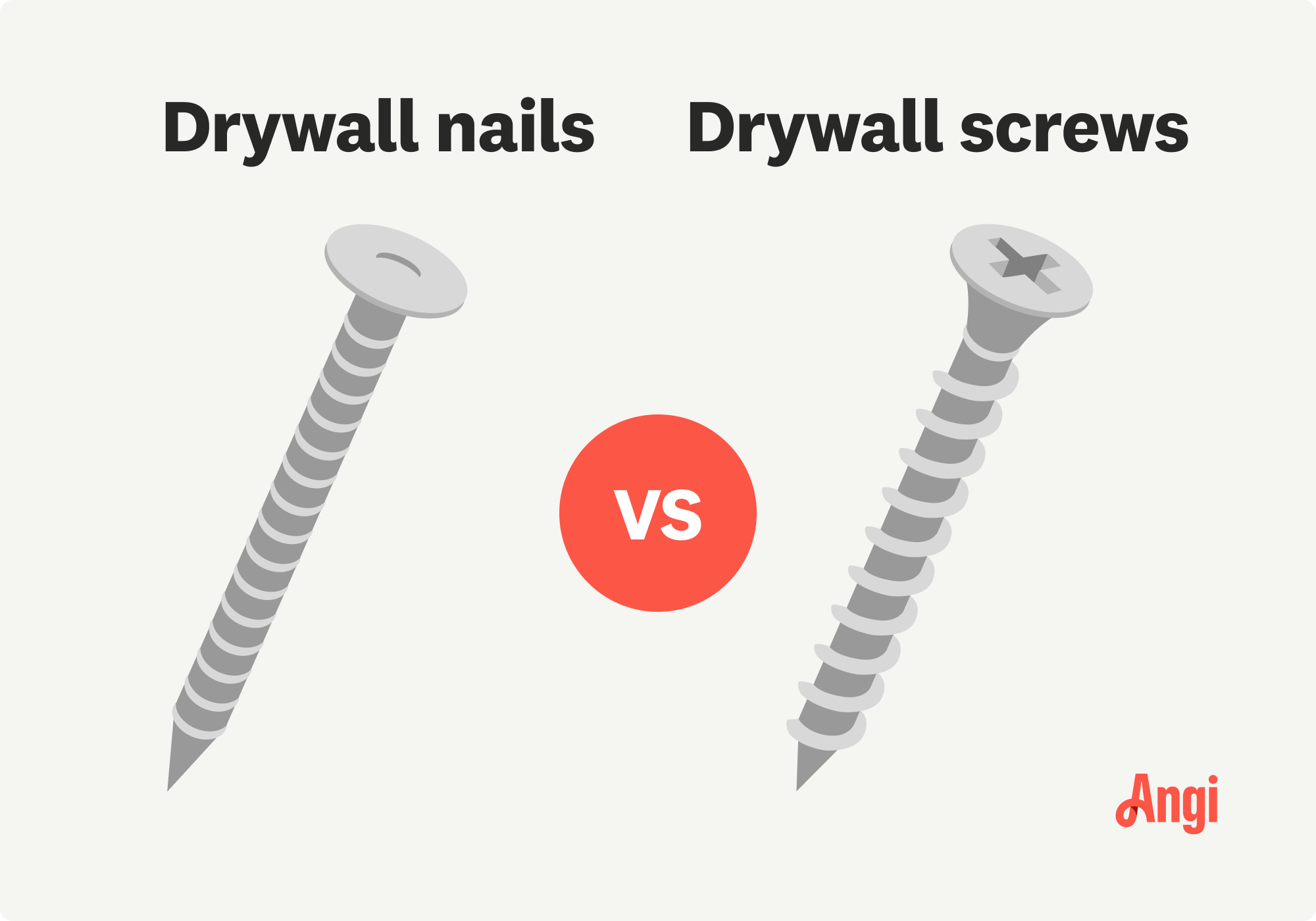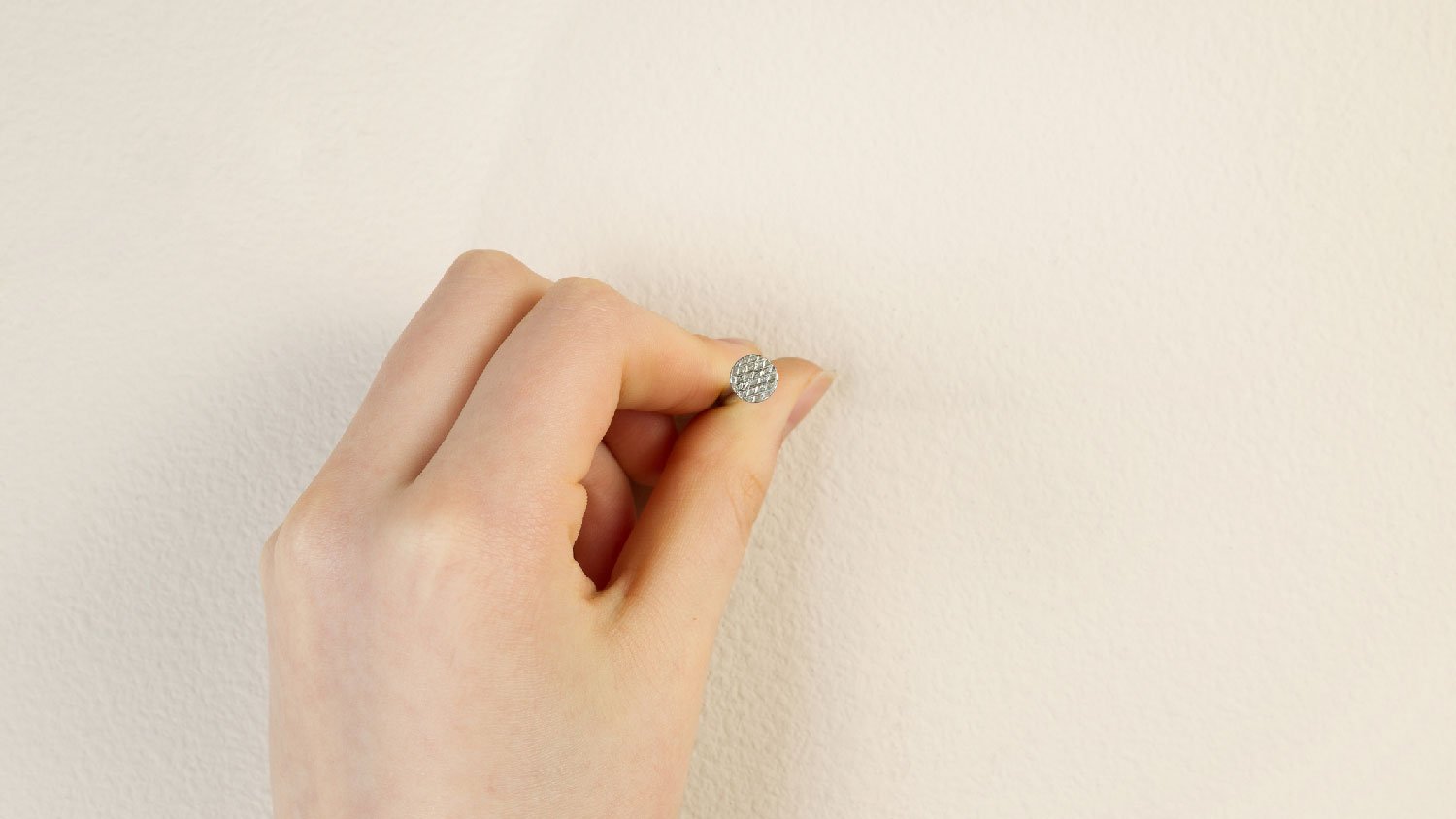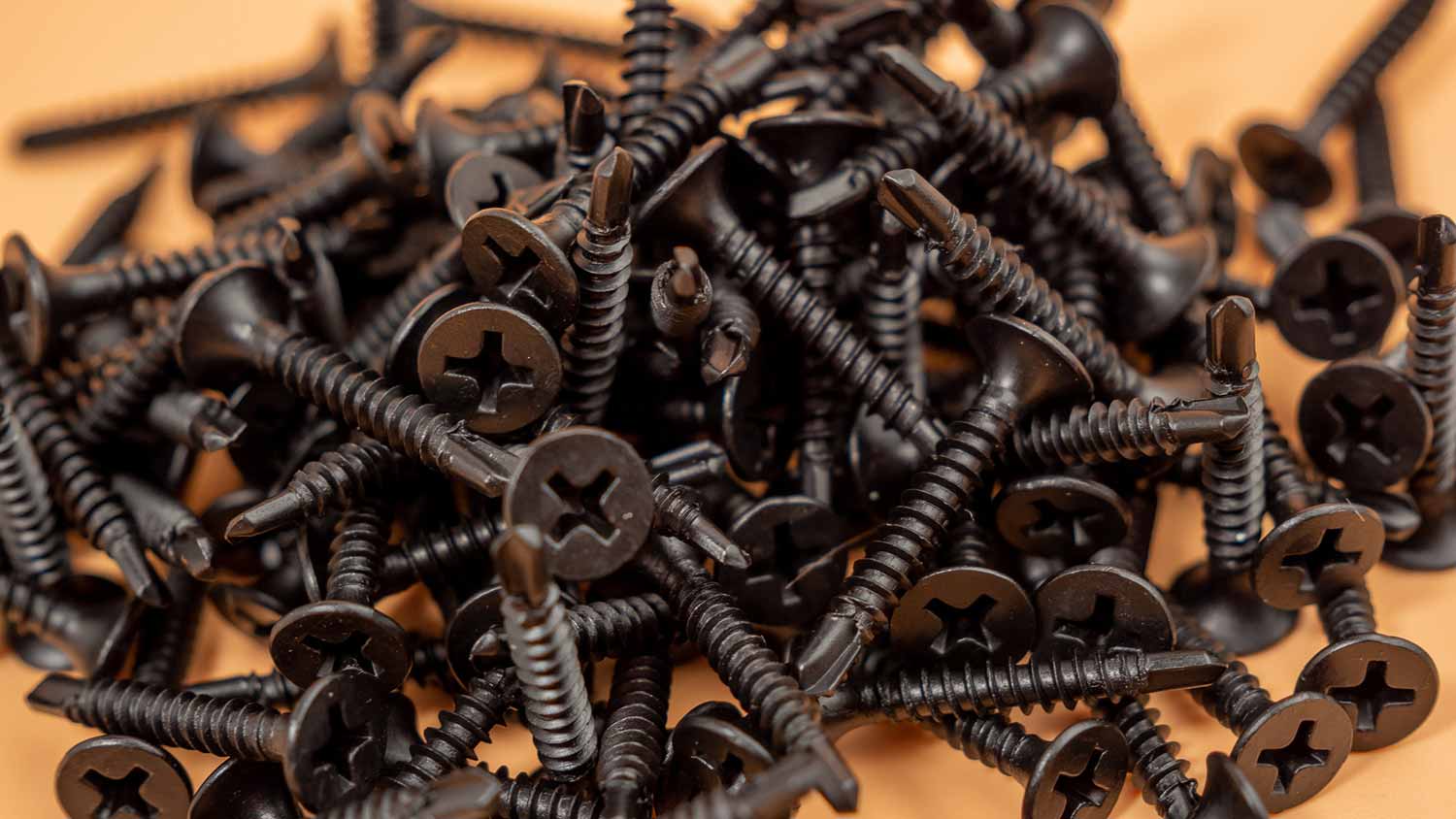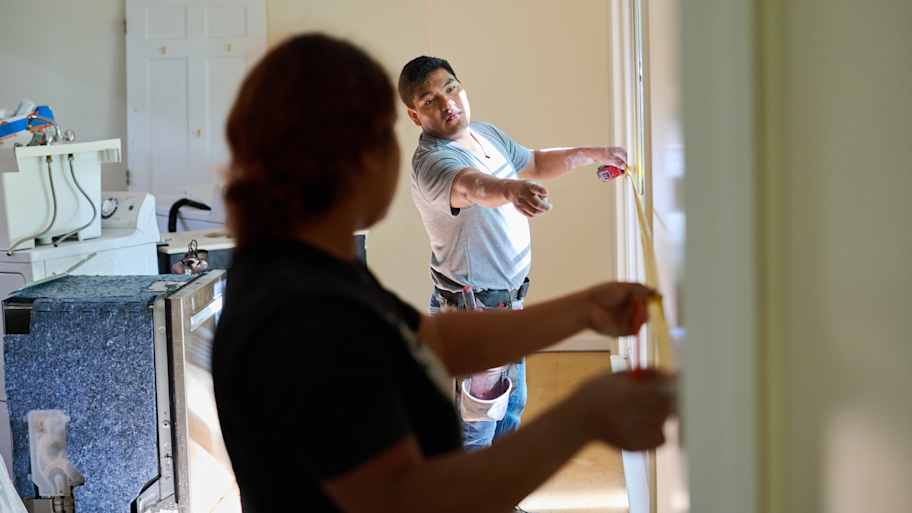Drywall Nails vs. Screws: Which Is Best When Hanging Drywall?
To screw or to nail—that is the question


While drywall nails and screws do the same job, they may not achieve the exact same result.
Drywall nails are more affordable than screws, but you’ll use more during installation.
Drywall screws hold drywall more securely to walls and ceilings.
Hanging drywall requires attaching drywall sheets to the studs with nails or screws, taping and mudding the joints for a smooth finish, and painting the finished drywall to complete the look. Drywall nails and screws achieve the same result—they attach the drywall to the studs—but they each offer different benefits and challenges. Weighing the following differences can help you make the best decision for your drywall project.
Drywall Nails vs. Screws: Key Differences
Drywall nails and screws attach and securely hold drywall to a stud. While they serve the same function, key differences make one better suited for drywall installation than the other. Drywall screws provide a stronger connection between the drywall and the supporting stud because their threads grip the material better than nails, even ring-shanked ones meant for drywall. Because of this, you’ll need fewer screws to secure the drywall.

Nails are suitable for attaching drywall to walls, but they aren’t the best choice for installing drywall, especially drywall on a ceiling due to the pressure from gravity. If you’re unsure which to use for your project, a drywall contractor can help you choose the best material.
What Are Drywall Nails?

Drywall nails move through the drywall and sink into the stud. Today’s drywall nails are often ring-shanked, meaning there are small rings along the shaft. This gives them a better grip and helps prevent nail pop—when the nails “pop” out of the drywall, creating rounded, protruding blemishes.
Drywall nails also have a “cupped” head into which the joint compound can settle to create a smooth, level finish after taping the seams. Some nails are coated in phosphate, making driving them into the drywall and stud easier. They’re the more affordable of the two types of drywall fasteners.
| Pros | Cons |
|---|---|
| No special tools needed | Not best for ceiling drywall |
| Less expensive than screws | More nails than screws are required |
| Available in various sizes | Prone to nail pops |
Best for:
DIYers who don’t want to purchase a screw gun
Projects on a tighter budget
Homeowners who are handy with a hammer
Pros of Drywall Nails
Drywall nails are less expensive than drywall screws. It costs between $4 and $8 for a 1-pound box of drywall nails, some of which contain over 300 nails, depending on the gauge and the length. Drywall screws cost around $5 for a 1-pound box and contain as few as 75 screws and up to 300 screws or more, and the price also depends on the length and gauge. You also won’t need special tools other than a hammer to use drywall nails.
Cons of Drywall Nails
Nails aren’t as effective at holding drywall in place as screws, and the International Residential Code (IRC) requires less spacing between nails than screws, so you’ll need more nails per sheet of drywall than screws. They’re not a good option for hanging drywall on the ceiling as they don’t offer as much security against the force of gravity as screws do.
Drywall nails are also more prone to “pop.” Nail pop happens when a nail works its way out of the drywall and creates a small, round protrusion, as mentioned above. These can be unsightly and may indicate that the drywall isn’t securely fastened to the wall.
What Are Drywall Screws?

Drywall screws are made to hold drywall to its supporting stud, which can be wood or metal. The fluted head of the screw allows it to sink into the drywall at relatively uniform depths, making a smooth finish much easier. Different drywall thicknesses require different drywall screw sizes, so they come in various lengths and gauges.
| Pros | Cons |
|---|---|
| Create uniform indentations | Cost more than nails |
| Less likely to pop | Requires screw gun |
| Stronger grip strength | Takes practice to get the right depth |
Best for:
Ceiling drywall projects
Drywall that requires extra security
Homeowners who own the appropriate tools
Pros of Drywall Screws
Drywall screws are designed for drywall installation, so don’t try to use wood screws in drywall. Installing drywall with the correct screws is easier than it is with nails because they have threads and a sharp point that can go through drywall with ease. Because of the thread design, they hold the drywall more securely to the studs than nails and are the best choice for ceiling drywall installation.
They also have a bugle shaped head that sinks to the appropriate depth in the drywall without breaking the paper. Because of these features, once the drywall is installed and the seams taped and mudded, drywall screws are less likely to “pop” than nails.
Cons of Drywall Screws
It takes some practice to get the depth of the screw just right, but the bugle (the fluted head design) helps the screw stay in place and creates the right indentation depth, making taping and mudding the seams easier. Drywall screws cost more than drywall nails, but you won’t use as many of them, which helps balance out the cost. And using screws requires a screw gun in addition to the other necessary tools for drywall. If you don’t already have these tools on hand, they will add to your costs.
Drywall Nails vs. Screws

When it comes down to choosing whether to use drywall nails or screws, these factors can help you make the right decision. You can also ask your local drywall contractor which material they prefer.
Strength: Screws
Screws feature a threaded shaft that allows the screw to bite into the wood, holding the drywall securely to studs on walls and ceilings. If you need an even stronger hold, you can glue drywall by applying construction adhesive to the studs (before installing the drywall). This can strengthen the connection even more, and depending on building codes, you may be able to use fewer screws.
Price: Tie
A box of drywall screws can cost slightly more than a box of drywall screws, but you’ll get fewer screws per box. But because you’ll have to use more nails than screws per sheet of drywall to secure it to the stud, the cost may end up balancing out despite initial appearances.
Ease of Installation: Screws
While screws require a drill or screw gun to drive them into the drywall and stud, they’re still easier to install than nails that you have to repeatedly pound with a hammer. If the screw gun has a magnetic tip and sleeve to hold the screws in place, it’s even easier.
Appearance: Screws
At first, it may seem like the appearance of drywall screws and nails won’t matter. They’re covered by tape, mud, and paint, after all. But because nails are more likely to pop than screws, screws will be the better choice if you want to keep your drywall smooth.





- Should You Glue Drywall? Learn the Pros and Cons of Drywall Adhesive
- Who Installs Drywall? Get the Right Pro for the Job
- Tools for Drywall: A Complete List for DIYers
- 5 Types of Drywall and the Use Cases for Each One
- How to Dispose of Drywall When You’re Done With a DIY
- Everything You Need to Know About Drywall Thickness and Size Options
- When Should You Hire a Pro for Drywall Repair vs. DIY?
- What Is Drywall Made Of?
- Drywall Fire Ratings: Is It All Fire-Resistant? Here’s What to Know
- Who Should You Call For Drywall Repairs?










